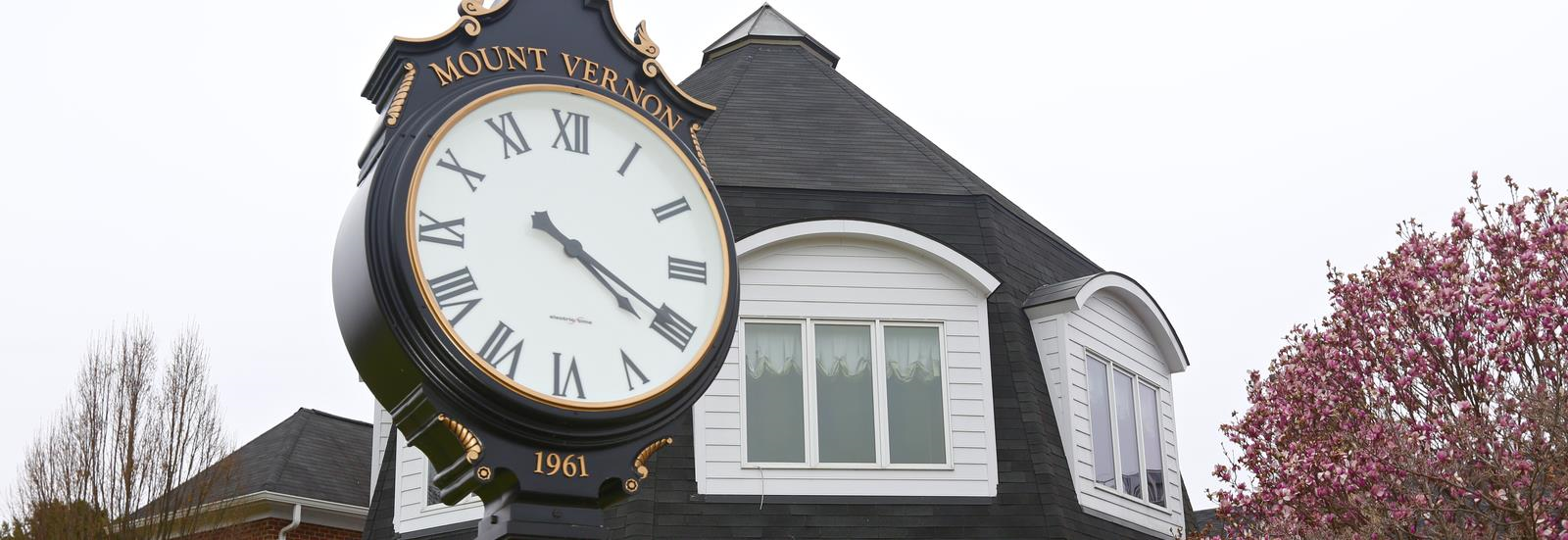HISTORY
Long before Sam Snead teed up the first golf ball at Mount Vernon Country Club, George Washington hunted foxes on its future fairways. The land on which the course sits has a long history – land given by an uncrowned king to guarantee the support of his closest friends; land given as a reward for services rendered; land fairly divided by close friends; land both inherited and purchased by Washington family members – one of them, the country’s first president.
We take great care of our facilities on Old Mill Road – the clubhouse, the fairways, the rough, the greens - all of which are affected by… the rub-of-the-green. Dogue Creek, still flowing throughout the course’s 128.8 acres, provides useful water features that challenge players. The famous Virginia Pine tree-lined fairways are not as thick as they were in the 1960s.
Over the last twenty years or so, storms have felled several thousand of these trees as well as some hardwoods. In 2017 a large number of pines were intentionally removed to allow for long-range hardwood reforestation. In 2007 the loss of a sycamore tree that stood by the 9th green was a significant tree loss to the club’s landscape. Estimated to be 230 years old, it was a living connection between George Washington’s family and Mt. Vernon Country Club. That we carry forward the memory of that loss speaks to the fact that we see ourselves as more than caretakers of Mt. Vernon’s Union Farm-Field 4 – its trees, its soil, its streams. We also see ourselves as stewards of its history which, like the land, will always be in situ: in its original place.
In 1946 real estate developer Harry Driesen and his wife Sadie (who together would form Rapid, Inc.), took an interest in the “197 acres more or less” that surrounded David Walton’s home, Walnut Hill. Its owner at the time, former Rep. Miles Allgood, was ready to move back to Alabama. How the couple connected with Allgood or his trustees is a mystery, but Sadie Driesen held several land parcels as collateral for loans to Allgood. Over time, Rapid, Inc. bought every acre as they became available. By 1950, Dreisen (i.e. Rapid, Inc.) owned 99 of the 197 acres, again, “more or less,” that surrounded the house. From these acres Driesen sold four lots of a subdivided parcel he named Mt. Vernon Cedars, Section 1 and two lots of a second undivided and unnamed section. He sold a third complete parcel to the Fairfax County School Board.
In December 1952, when the remaining 98 acres were offered at auction, Rapid, Inc. snapped them up for $20,000.Harry Dreisen had both a vision and a plan for this land parcel surveyed to be 95.88269 acres – lay out a 9-hole golf course, build a clubhouse, start a country club, and lease the finished project to the club’s members. It took Dreisen eight years to make it happen. When, not if, enough members joined to sustain the club, he hoped to expand the golf course to 18 holes. In early 1960 Dreisen took on a third partner, Dick Mason, a twenty-four year old professional golfer with one year of assistant management experience. Dreisen organized his new club – which he named THE Mount Vernon Country Club.
Dreisen would then hire Mason in December 1960 as the new club’s first golf pro with Driesen serving as manager. By April 1960 course designer Russell Roberts had drawn up a plan to carve fairways and greens out of what he saw as solid timber. His vision was simple: bulldoze the land and use its natural contours. The 1960 spring/summer work on the golf course paid off, and by April 5, 1961, the rye fairways had filled in and been cut three times. There are records about hand watering the fairways and some understanding that the greens and tees were irrigated. The greens were cut the first time April 10, 1961. Tickets for the grand opening exhibition on June 10, 1961 – featuring Sam Snead – were on sale for $3.20. Many private golf and country clubs built during the 1960s have abandoned their golf courses and sold the property to housing developers.
Our success can most certainly be attributed to the fact that Harry’s vision became the dream of Mount Vernon Country Club’s earliest members. The club’s vision for itself today is still seen though their lens. The Mount Vernon Country Club story is one of sheer determination to turn seemingly unrealistic expectations into dreams come true. The physical progress made in the sixties gave way to that of the seventies, followed by financial success in the late eighties. While doing the hard work of building a solid corporation, warm friendships developed, and out of that, a community grew and became deeply committed, in a personal hands-on way, to the success of the club.

